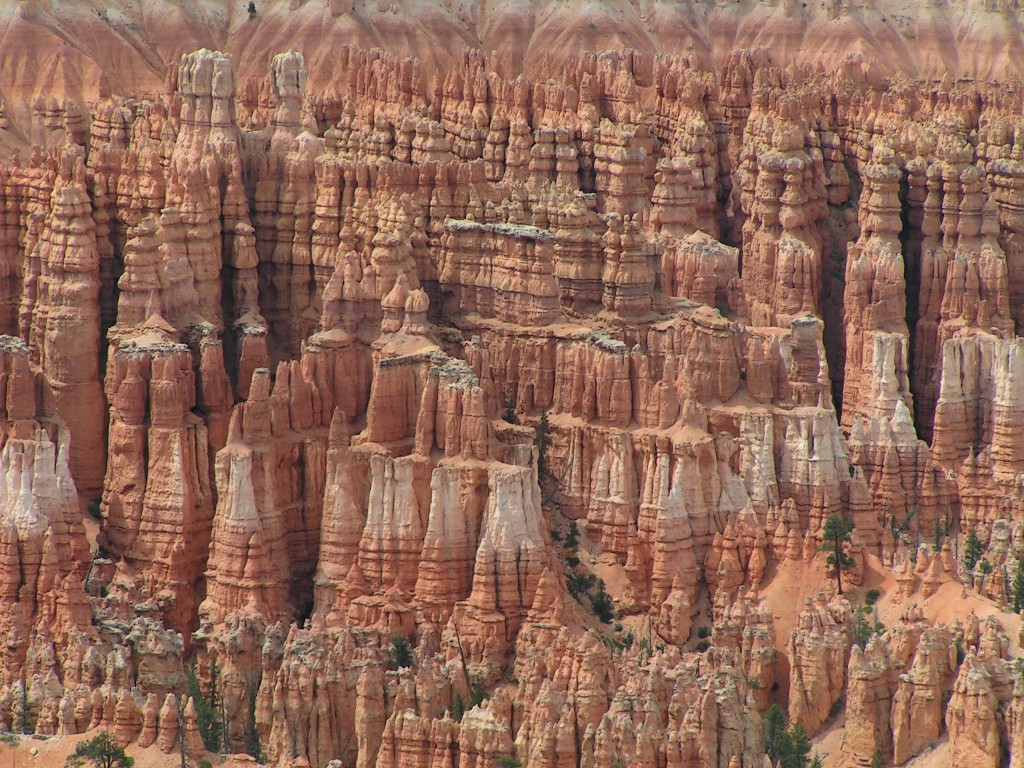
“Rainbow in stone” by Marina Manea, distributed by the European Geosciences Union under a Creative Commons licence.
Nothing better characterises the wild US West than endless landscapes of red hoodoos, spires of rock protruding from the bottom of an arid drainage basin or badland. Found mainly in desert and dry, hot areas, hoodoos are distinctive from similarly-shaped formations, such as spires or pinnacles, because their profiles vary in thickness throughout their length. Their distinctive colour bands are the product of erosional patterns differentially affecting layers of harder and softer minerals.
Nowhere in the world are hoodoos as abundant as in the northern section of Bryce Canyon National Park in Utah, USA. There, these formations, also known as goblins or in French as demoiselles coiffées (“ladies with hairdos”), dominate the landscape.
At Bryce Canyon, hoodoos are formed by two continuously operating weathering processes. The first, frost wedging, occurs as a result of Bryce’s over 200 annual freeze/thaw cycles. In the same way potholes are formed on a paved road, water breaks open the rock when it seeps into cracks, freezes, and expands. Secondly, the hoodoos are also sculpted by rainfall, both physically, because it removes debris, and chemically, because its slightly acidic pH dissolves the limestone.
Marina Manea, who works in the Computational Geodynamics department of the Universidad Nacional Autonoma de Mexico, took this early-morning picture from a helicopter whilst on holiday in Utah in August 2010. She explains, “Bryce Canyon has a unique geology, with deposits from the late Cretaceous and early Cenozoic eras. It is not a classical canyon but, rather, a collection of amphitheaters modelled by the erosional force of frost-wedging and the dissolving power of rainwater acting on the colorful limestone rock of the Claron Formation. In this way, the spires, or ‘hoodoos,’ are formed. The rocks forming the hoodoos are limestone (sedimentary rocks) exhibiting beautiful colours (red, orange, or white). The entire geology of the Bryce Canyon is related to the geology of the Grand Staircase region and Black Mountains volcanic complex. It rained just before this picture was taken, which explains the exceptionally vivid colours on display here.”
The area around Bryce Canyon was originally settled by Native Americans and later by Mormon pioneers. The national park was established in 1928 and today around 1.3 million (2011) people annually travel to witness its wild terrain and spectacular sunset colours.
Imaggeo is the EGU’s online open access geosciences image repository. All geoscientists (and others) can submit their images to this repository and since it is open access, these photos can be used by scientists for their presentations or publications as well as by the press and public for educational purposes and otherwise. If you submit your images to Imaggeo, you retain full rights of use, since they are licensed and distributed by the EGU under a Creative Commons licence.
